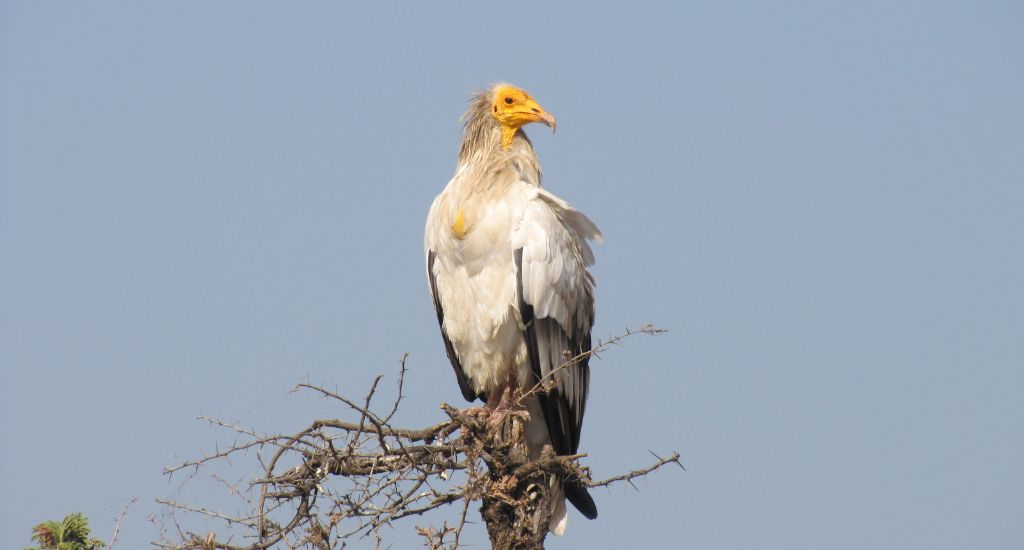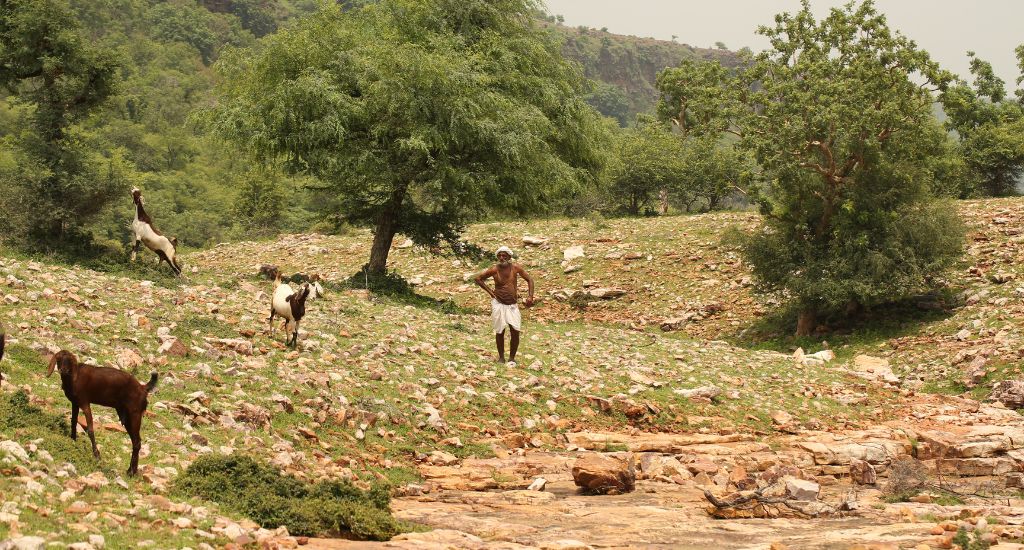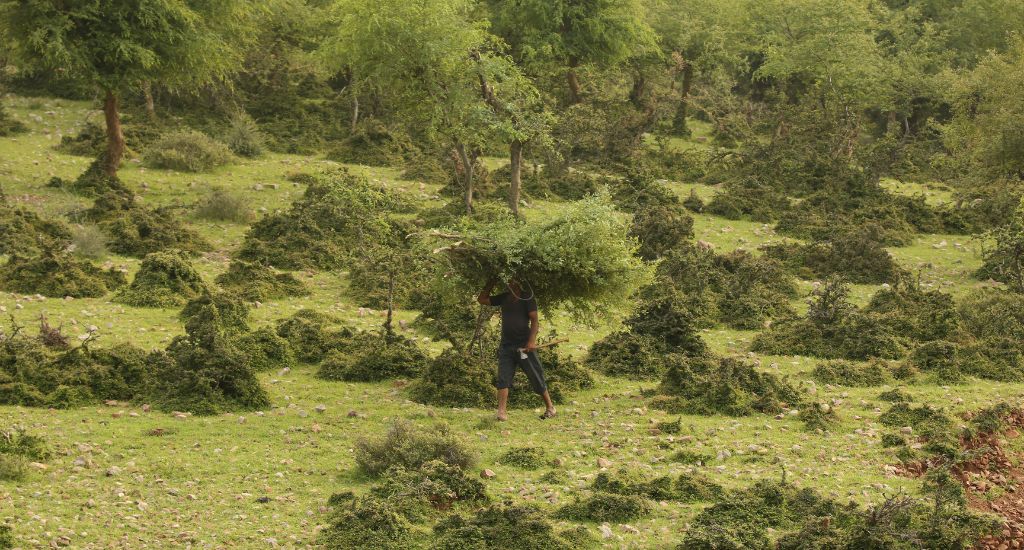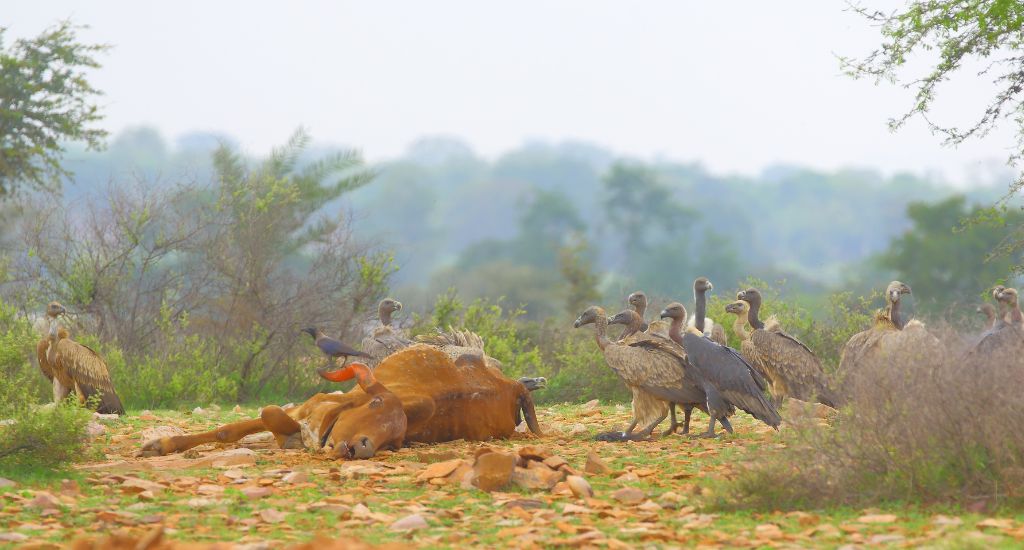
Rajasthan village teams up to revive dhok trees, vultures
The once-degraded common lands around Kekariya village in Rajasthan are now teeming with several treasured species of plants and animals, thanks to the community’s efforts.

The once-degraded common lands around Kekariya village in Rajasthan are now teeming with several treasured species of plants and animals, thanks to the community’s efforts.
More than 350 million rural poor in India depend on common lands (25 percent of India’s landmass), including community forests, pastures and ‘wastelands’. Common lands help communities meet the basic needs of food, fodder, water, medicine, firewood and timber. They also provide critical ecosystem services like surface and groundwater, soil nutrients, safe habitat for wildlife, pollination, pest control and carbon storage. They are vital for the viability, resilience and growth of rural communities, all the more so in the face of the unfolding climate crisis.
Over the years, however, there has been a continuous decline and degradation of these lands, leading to scarcity of water, biomass and nutrients. Additionally, the habitats for wildlife, pollinators and pest predators have also been adversely affected. This has resulted in a loss of critical biodiversity, decreased agricultural yields, higher cultivation costs, reduced grazing spaces for livestock and distress migration.
The situation in Kekariya, a revenue village located about 65 km from the district headquarters in Bhilwara, Rajasthan, was no different. Nestled in a valley surrounded by hills on all sides, Kekariya has a history of over two centuries according to the community, although no written records exist. The village’s name is derived from the abundance of stones (kankar) in the region. The community is majorly agro-pastoralist, with huge dependence on their common lands for water, fodder and other resources.

Until the 1980s, Kekariya was surrounded by dense forests teeming with diverse tree species, wildlife and abundant water resources. However, reckless deforestation, overgrazing and increased pressure for agriculture and livestock needs severely impacted the natural resources in the area. The once flourishing hills gradually transformed into barren lands. Even dhok (Anogeissus pendula), which is a resilient tree species native to the region, experienced a significant decline in both their distribution and quality as a result of increased human activity. Years of overgrazing by livestock and indiscriminate cutting caused the dhok trees to diminish into shrubs. It further accelerated soil erosion and rainwater runoff, depleting the village’s water resources, including groundwater levels as evidenced by reduced water availability in open wells.
To arrest this severe decline, the community of Kekariya came together to form a village institution to restore and govern their common lands in 1996. They formed a Tree Growers Cooperative Society (TGCS) and acquired a lease for 100 acres of degraded common lands beside the Kekariya gorge. The community commenced restoration efforts, including soil and moisture conservation as well as revegetation, with the aim of improving forest cover and water availability. Trenches were dug, native grasses and tree species were planted and seeded, and the entire community took responsibility for their protection and conservation. Rules and mechanisms were put in place to strengthen collective action, stop unsustainable practices and ensure the protection and conservation of the restored land.

Within a few years, the combined efforts began yielding results. The 100-acre patch regained its past glory with a lush green cover, flowing streams and a significant increase in wildlife. This restoration not only improved surface and groundwater resources but also enhanced the availability of fodder and fuel for the local communities. These improvements played a significant role in enhancing livelihoods in the village by supporting agriculture and livestock production.
The restoration of the common land in Kekariya also played a crucial role in conserving native species, thereby enhancing the local ecosystems. Various species of flora and fauna, including threatened and vulnerable species such as vultures, Indian wolf, striped hyena, Alexandrine parakeet, black-headed ibis, and woolly-necked stork, have returned to the area. The area now provides suitable habitat due to the presence of burrows, high cliffs, grass patches, thorny vegetation and water bodies.

One of the most remarkable outcomes was the revival of dhok trees, both in terms of density and quality, as well as the thriving population of Indian vultures (Gyps indicus), white-rumped vultures (Gyps bengalensis, and Egyptian vultures (Neophron percnopterus, locally known as Kavaliya) in the area. The dhok trees have transitioned from stunted shrubs to fully grown trees. The forest as well as the other common lands in the village are replete with dhok, providing a steady fodder supply to communities, but under the watchful eyes of the community, ensuring its sustainable harvesting.
The return of the vultures in the area is also noteworthy. The IUCN lists the Indian vulture and white-rumped vulture as critically endangered while the Egyptian vulture is in the endangered category.
Vultures, known for their critical role in the ecosystem as scavengers, have suffered greatly due to habitat loss and degradation. Once ubiquitous, these birds have witnessed a sharp decline in their population in India – as high as 99 percent for some of its species – since the 1990s. Extinction of vultures, the apex scavenger, can cause severe imbalances in the ecosystem.
The Kekariya gorge was home to a good population of vultures around 20 years ago and communities say that groups of vultures, as large as 20, were seen regularly in the area. With reduced water flows and food availability, the gorge no longer provided them a safe habitat and the vulture population slowly vanished from the region with hardly any sightings.

But the community initiatives revived the gorge and it witnessed the return of this species. Vulture sightings began in the area about 10 years ago. Four years ago, nesting sites of Egyptian vultures were recorded while last year, nesting sites of the Indian vulture were seen. At present, over 50 vultures (in groups as large as 42 vultures) have been recorded in the area. The thriving vulture population in Kekariya indicates that the surrounding hilly regions provide suitable habitats and safe food for the birds, effectively shielding them from habitat loss and supporting their resurgence in the area.
Having demonstrated the significance of collective action and community stewardship of natural resources, the community of Kekariya now actively engages in the management of approximately 350 acres of common land, including 100 acres of revenue wasteland under the TGCS and 250 acres of adjoining forests. Monsoons offer a breathtaking spectacle in this small saucer-shaped village, as waterfalls cascade down the hills on all four sides.
The community of Kekariya is committed to continuing its protection and conservation of its Commons, improving its livelihoods while also protecting the native biodiversity. The efforts reinforce our belief that community conservation efforts go a long way – both for the restoration of landscapes and for the conservation of biodiversity, including threatened and endangered wildlife.
The lead image shows an Egyptian vulture at Kekariya village (Photo by Anil Sarsavan)
Kiran Singh works as general manager (communications), Foundation for Ecological Security, Anand